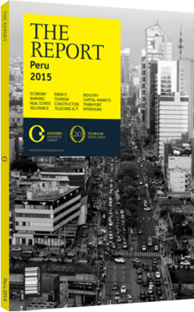Fernando D’Alessio Ipinza, Director-General, CENTRUM Católica, on decentralisation and competitiveness

It is undeniable that decentralisation is crucial for the country to achieve long-term sustainable economic growth. Peru’s Regional Competitiveness Index 2014 (Índice de Competitividad Regional 2014, ICRP) shows that the process has been slow and uneven since the country’s division into 26 regions in 2002. Unequal distribution of resources, increasing bureaucracy and a risky regional sense of identity are some of the factors that have made the process unsuccessful thus far.
Competitiveness needs to be understood as the administration of resources and the capacity to secure a sustainable increase in business productivity and in the welfare of a region’s population. To document the results, the ICRP is based on more than 90 variables, divided into five categories: economy, private companies, government, infrastructure and people.
The first thing that needs to be stated is the existing difference in competitiveness between metropolitan Lima and the other regions. In the 12 years since the decentralisation process began, the capital’s population and economic importance has continued to grow steadily, thus proving the ineffectiveness of the system. Private companies, both local and international, remain reticent to set up their headquarters outside of Lima, as logistics costs are higher and quality personnel harder to come by. That being said, the concentration of companies in Lima should give it a competitiveness ranking of 90% rather than close to 70%.
The estimated $90bn infrastructure deficit demonstrates the country’s need to develop not only energy and transport projects but also education and health facilities. Though the regions have enough financial resources, they lack the management capacity to carry out public infrastructure investments. This is paramount to improving productivity and thus increasing competitiveness, not only among the various regions but also on an international level.
The importance of highly qualified professionals to improve competitiveness must not be understated. The concentration of the country’s best universities in Lima means that students need to come to the capital to receive a good quality education. Combined with the low average quality of tertiary institutions, this has resulted in a lack of talent that is affecting competitiveness. Both the central and regional governments need to promote models like that of Moquegua, which, with good use of resources and investment in both infrastructure and education, has succeeded in reaching the top five in the ICRP and achieving one of the best – if not the best – levels of education in Peru.
The role of the regional governments in increasing competitiveness is crucial, as they are responsible for almost 65% of the entire public budget. But a mix of bureaucracy and lack of management capacity has made most of the 26 regional authorities ineffective. The reality is that the governments have enough financial resources at their disposal but lack the competence to execute investments in public infrastructure. There are examples such as Cajamarca, where the regional president, on trial for accusations of corruption, is opposed to mining projects, thus turning one of the regions with the most natural resources into the country’s third-least competitive.
There has to be more effort to educate the communities to help them understand the benefits of investment in their region. The truth is that with the current model of decentralisation, regions such as Huancavelica, Ayacucho, Cajamarca and Apurímac will find it very difficult to become competitive.
With the model of 26 regions having proven to be inefficient, we should start thinking about a new framework of just 10 larger regions with simplified government models. This would help reduce fragmentation, and the grouping together of several less competitive regions would help them develop and improve.
Attracting foreign direct investment is vital for boosting the country’s competitiveness, for which the regions need to improve on all five aspects of the ICRP. If Peru wants to become a regional power it needs to raise its competitiveness rank and not focus solely on Lima.
You have reached the limit of premium articles you can view for free.
Choose from the options below to purchase print or digital editions of our Reports. You can also purchase a website subscription giving you unlimited access to all of our Reports online for 12 months.
If you have already purchased this Report or have a website subscription, please login to continue.

